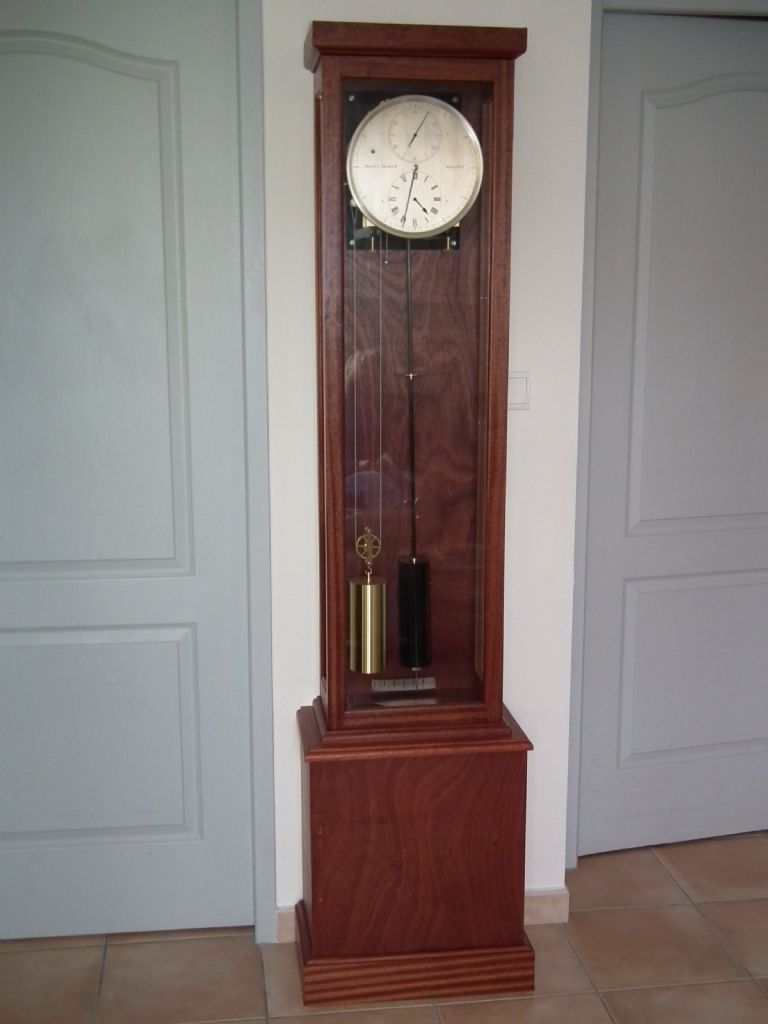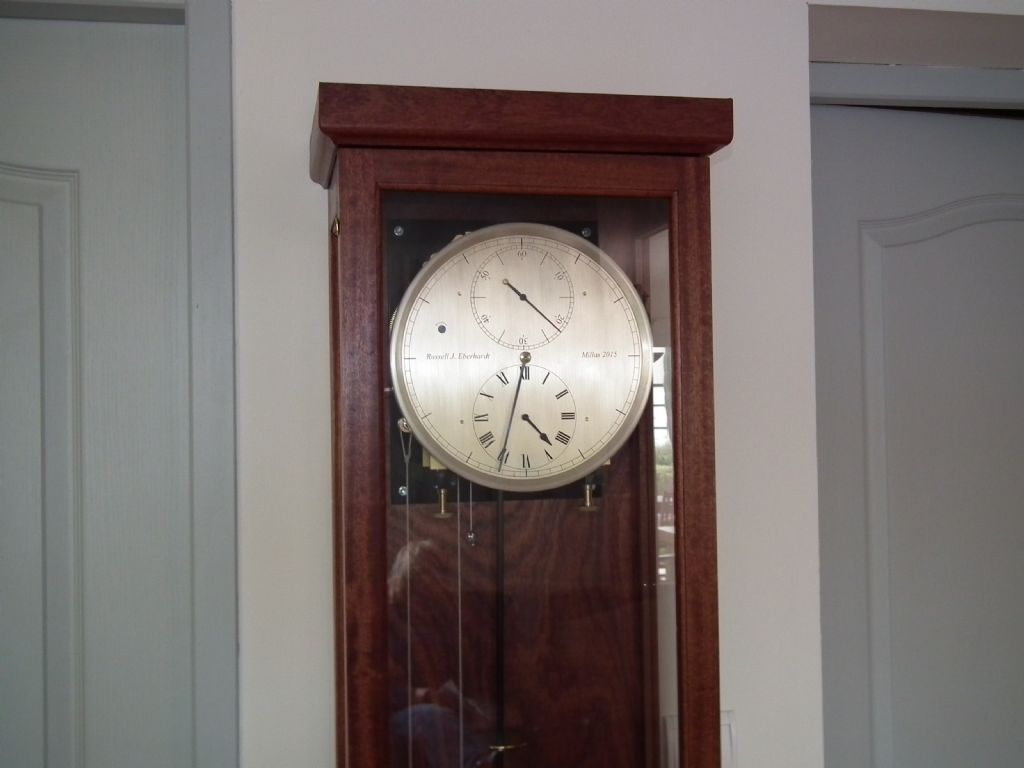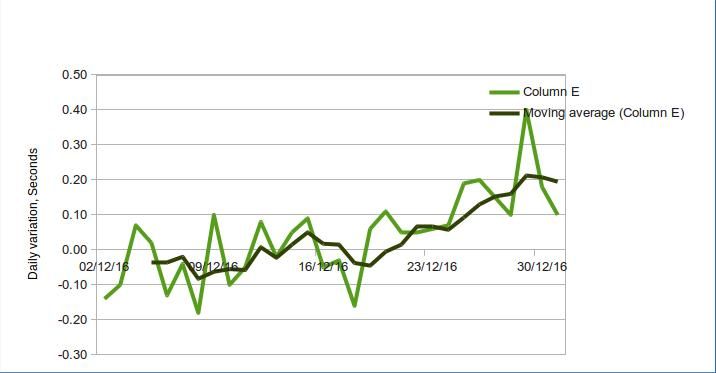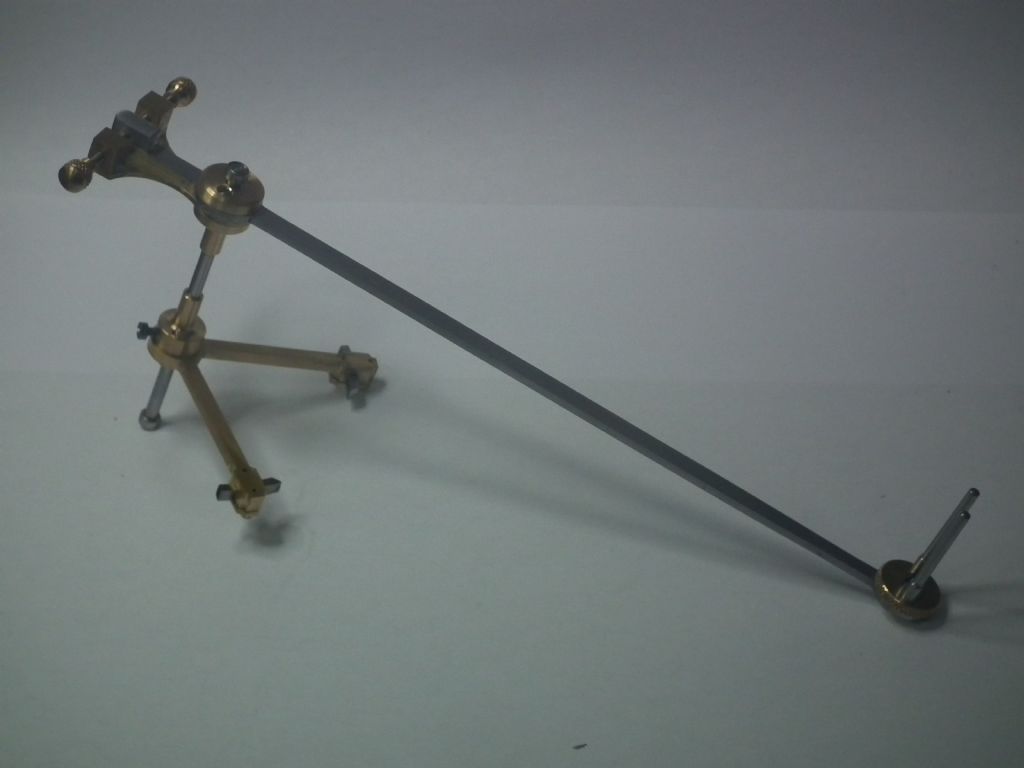Posted by Stephen Benson on 29/04/2016 09:52:01:
I would also like to know more about how you printed the dial
O.K. here goes:
I started by drawing the dial using Draftsight although any 2D CAD system would have done. I then mirrored it to get a reversed print so that the printing on the transparency would be on the underside and directly in contact with the resist. I found that the printer would not print to the defined pen thicknesses so I printe to PDF and then used the PDF viewer to print the master on acetate film using an Epson printer in photo mode in order to get dense blacks.
I thoroughly washed the brass sheet in detergent and hot water to remove any grease and then wet laminated the resist film before passing it through an office laminator. The brass with the photoresist and the master was then sandwiched between an MDF board and a glass sheet with some thin translucent plastic foam to make sure there were no gaps between the brass plate and the master and expose to the sun for 3 seconds. I am in the South of France so I guess slightly longer exposure would be needed in the UK. The resist film came from Mungolux in Germany.
Once exposed the resist was developed in washing soda solution and then washed to give the result shown in my photo. Exposure and development times need to be determined by experiment.
The plate was then etched in ferric chloride for about an hour with occasional agitation. Then washed and dunked in caustic soda solution to remove the resist.
I sprayed it with black acrylic car paint to fill the etched portions and the paint on the unetched parts was removed using fine wet and dry paper and water. I then grained it with 240 wet and dry, fairly coarse but it looks appropriate on a large dial.
Again very careful washing before rubbing with silvering powder and then finishing powder. To protect the silvering I made up a lacquer from shellac dissolved in colourless meths (sold here as burning alcohol).
Throughout I did experiments on scraps of brass to verify each process. I now see why bespoke etched dials are so expensive to buy!
Russell
 Russell Eberhardt.
Russell Eberhardt.







